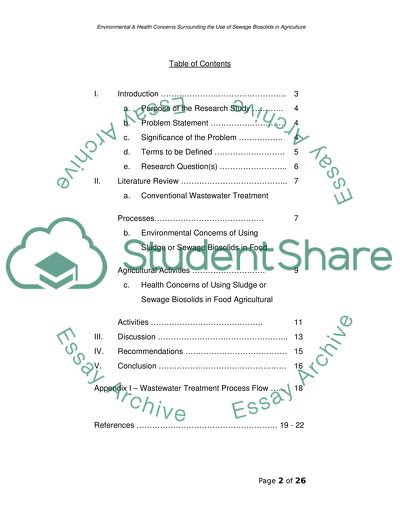Cite this document
(“The nature and extent of environmental health concerns surrounding the Essay”, n.d.)
The nature and extent of environmental health concerns surrounding the Essay. Retrieved from https://studentshare.org/miscellaneous/1557692-the-nature-and-extent-of-environmental-health-concerns-surrounding-the-use-of-sludge-and-biosolids-from-wastewater-treatment-in-agriculture
The nature and extent of environmental health concerns surrounding the Essay. Retrieved from https://studentshare.org/miscellaneous/1557692-the-nature-and-extent-of-environmental-health-concerns-surrounding-the-use-of-sludge-and-biosolids-from-wastewater-treatment-in-agriculture
(The Nature and Extent of Environmental Health Concerns Surrounding the Essay)
The Nature and Extent of Environmental Health Concerns Surrounding the Essay. https://studentshare.org/miscellaneous/1557692-the-nature-and-extent-of-environmental-health-concerns-surrounding-the-use-of-sludge-and-biosolids-from-wastewater-treatment-in-agriculture.
The Nature and Extent of Environmental Health Concerns Surrounding the Essay. https://studentshare.org/miscellaneous/1557692-the-nature-and-extent-of-environmental-health-concerns-surrounding-the-use-of-sludge-and-biosolids-from-wastewater-treatment-in-agriculture.
“The Nature and Extent of Environmental Health Concerns Surrounding the Essay”, n.d. https://studentshare.org/miscellaneous/1557692-the-nature-and-extent-of-environmental-health-concerns-surrounding-the-use-of-sludge-and-biosolids-from-wastewater-treatment-in-agriculture.


